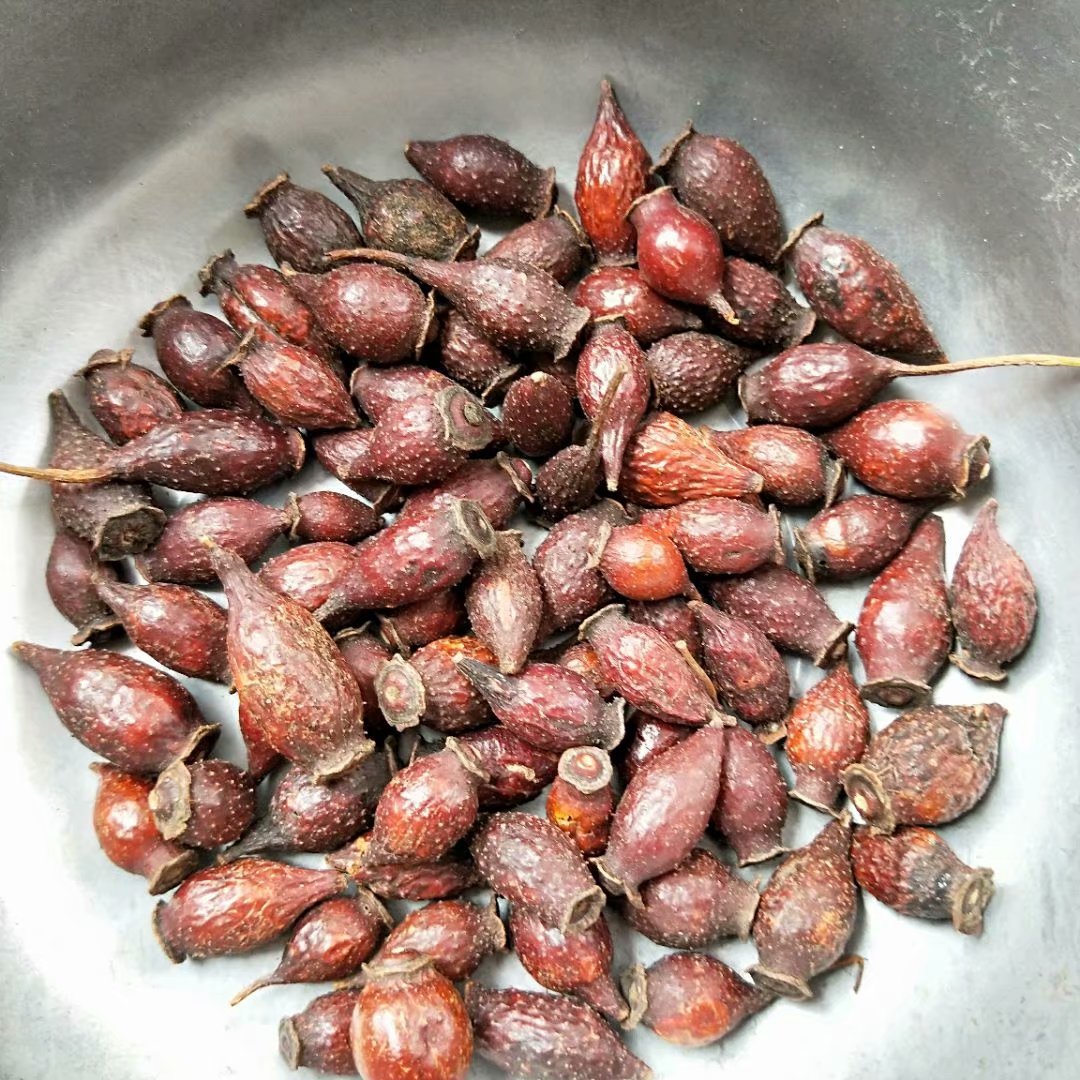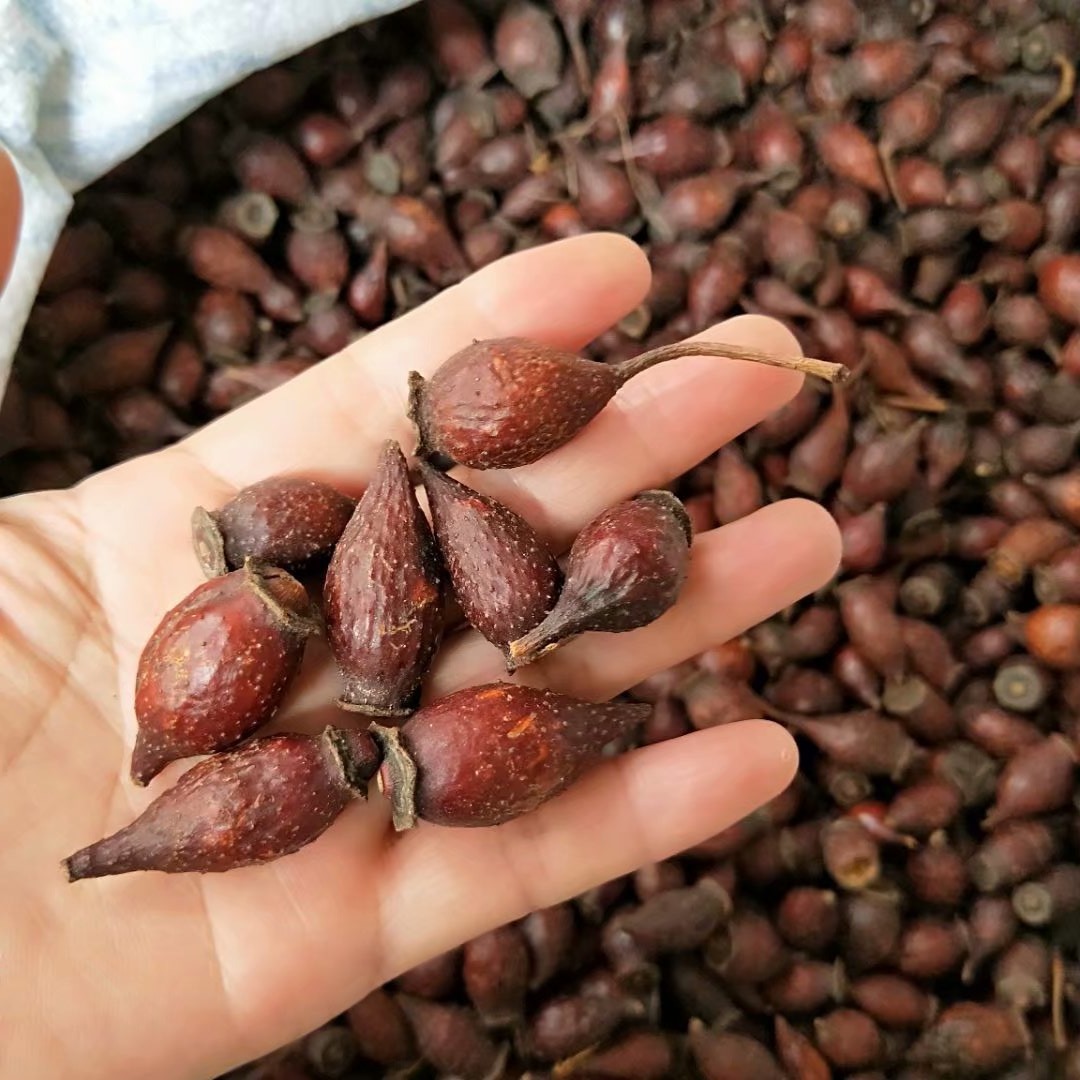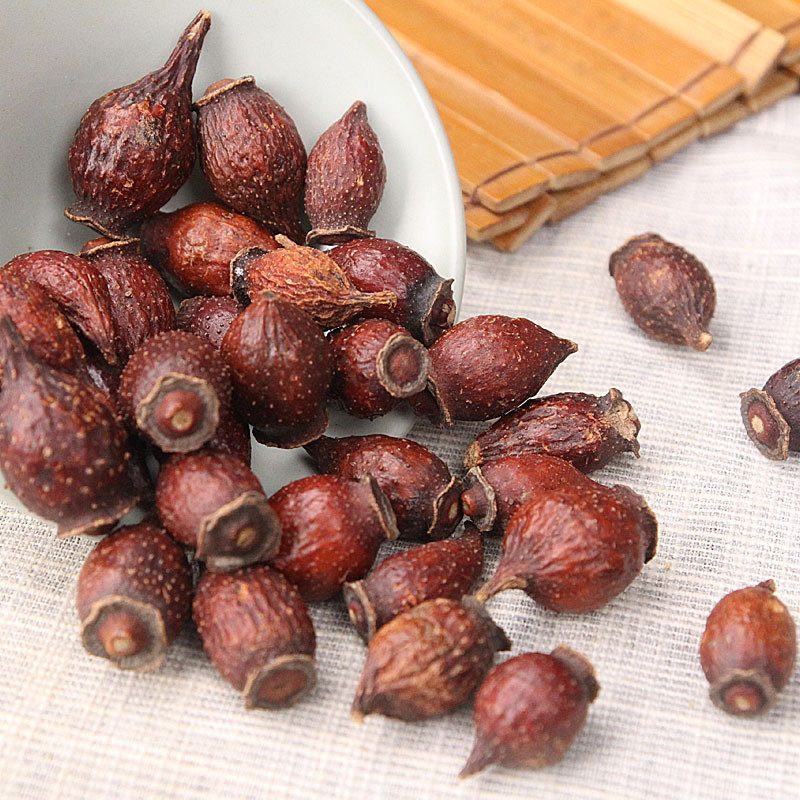
fructus rosae laevigatae(Golden cherry), known as "Jin Ying Zi" in Chinese, is a fruit-bearing plant that belongs to the Rosaceae family. The scientific name of the plant is Rosa laevigata. Mature fruits of golden cherry are oval or round in shape, yellow to reddish-orange in color, and contain a number of small seeds.
Here are some key points about golden cherry:
Appearance and Characteristics: The golden cherry plant is a deciduous shrub with thorns, similar in appearance to other rose species. It has pinnate leaves with 5-7 leaflets and produces attractive white or pale pink flowers that later give way to the development of the golden-colored fruits.
Cultivation: Golden cherry is adaptable and can grow in various soil types, but it prefers well-drained soil and full sun exposure. It is hardy and resistant to pests and diseases, making it relatively easy to cultivate.
Harvest Season: The fruits mature in autumn and are typically harvested once they have turned from green to their characteristic yellow or orange-red color.
Nutritional and Medicinal Value: Golden cherry fruits are edible and rich in vitamins, organic acids, and trace elements. In traditional Chinese medicine, the fruit is used for its astringent properties and is believed to benefit the liver and kidney functions, as well as to strengthen the bones and muscles.
Uses: Fresh fruits can be eaten raw or made into jams, juices, and wine. They are also often dried and used in traditional medicine.
Pests and Diseases: While generally resilient, golden cherry plants may still be susceptible to common rose diseases such as powdery mildew and rust. Proper garden maintenance and disease management practices can help mitigate these issues.
Landscaping: Golden cherry shrubs are popular in landscaping for their ornamental value, offering beautiful flowers in spring and colorful fruits in fall that attract wildlife.








